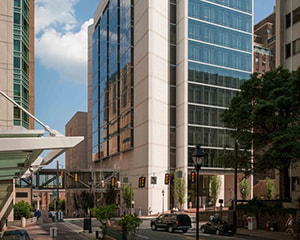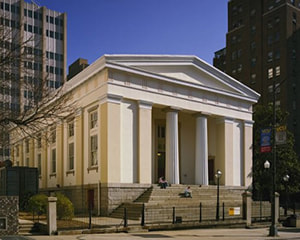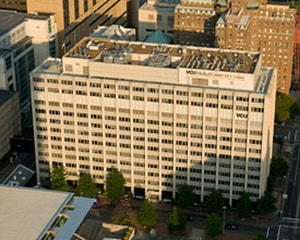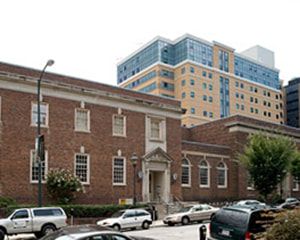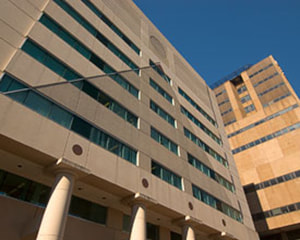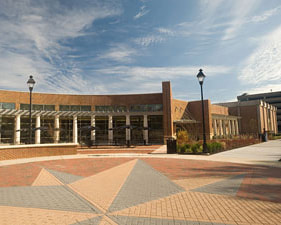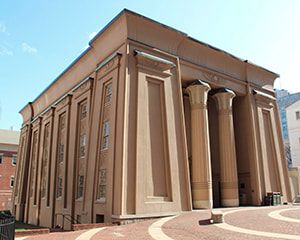MCV: Overview
|
Today, MCV consists of the schools of Allied Health Professions, Dentistry, Medicine, Nursing, Public Health and Pharmacy. More than 3,000 students, interns, residents, and postdoctoral fellows receive education in the health sciences on the MCV campus. Nearly 1,000 full-time and part-time faculty are involved with the medical school alone! It has been consistently ranked the number 1 hospital in Virginia
|
By the way, since this is an unofficial publication, you will see that this continues to refer to the school as "MCV" as most people still (unofficially) do. Any official communications from this school will refer to this school as VCU School of Medicine, as will all other schools on the MCV Campus (i.e., dentistry, pharmacy, allied health professions, nursing and public health). However, respected hospitals and medical organizations still recognize the MCV moniker.
|
History
|
The Medical College of Virginia (MCV) was founded on December 1, 1837, when the president and trustees of Hampden-Sydney College created a medical department in Richmond. In 1854, this medical department became the Medical College of Virginia, an independent institution.
The college's first permanent building, the Egyptian Building, opened in 1844 for medical instruction and hailed to this day as one of the finest examples of neo-Egyptian architecture in the United States! In 1860, when the Commonwealth of Virginia appropriated $30,000 for MCV’s first hospital (Old Dominion Hospital, since decommissioned), MCV became a state-supported institution. In 1893, a second medical college, the College of Physicians and Surgeons, was established just two blocks from the Egyptian Building. In 1894, its name was changed to the University College of Medicine. This college and MCV were consolidated in 1913. MCV continued to operate as a state-supported, free-standing medical school during the first part of the 20th century. However, concerns remained in the Virginia General Assembly about whether free-standing medical schools would continue to receive accreditation by the precursor to the Liaison Committee on Medical Education (LCME). To address those concerns, the Medical College of Virginia was merged with the Richmond Professional Institute to establish Virginia Commonwealth University (VCU) in 1968. In the years immediately following the merger, MCV continued to operate as an autonomous unit of VCU, retaining the medical college's colors (green and white), mascot (the Medicos) and its name (established |
by the General Assembly in the Code of Virginia as "the Medical College of Virginia, the Health Sciences Division of Virginia Commonwealth University"). As time progressed, however, VCU officials expressed growing frustration during attempts to unite MCV with VCU's other academic operations as one university, both in spirit and in name; university administrators thus sought to re- brand MCV via strengthening of its association with VCU. These efforts have faced considerable resistance from faculty, staff and alumni at MCV in the years following VCU's establishment. Trying to seek a compromise, the MCV moniker was changed to reflect its association with VCU; through the 1980s, the school used various names, the most popular being "Virginia Commonwealth University/Medical College of Virginia." In the mid-1990s, however, a prominent USA Today article highlighting research conducted by MCV researchers referred to the institution as "Virginia Medical College, the medical branch of the University of Virginia." Incensed, university officials moved to address the name debate, removing any MCV references and renaming the school as the VCU School of Medicine.
In recent years, the administration has promoted the idea that we attend the Virginia Commonwealth University School of Medicine on the MCV Campus, in the tradition of the Medical College of Virginia. Try putting that on a T-shirt. In 2012 the logo for the entire university was changed to contain an image of the Egyptian Building, reflecting the importance of the medical school and hospital to the university! You can find more details about the history of MCV here. |
Medical Education Buildings
|
McGlothlin Medical Education Center
1201 E. Marshall St. Hunton Student Center
1110 E. Broad St. |
Sanger Hall
1101 E. Marshall St. Tompkins McCaw Library
509 N. 12th St. |
Buildings belonging to the School of Dentistry and various buildings on the medical campus are occasionally used for exams or workshops.
For interactive and pdf copies of maps for the VCU campuses, click here.
For interactive and pdf copies of maps for the VCU campuses, click here.
Amenities
|
Refrigerators
Microwaves
|
Coffee Machines
Printers
|
Vending Machines
|
Trivia
|
Sports
Junto
|
Colors
Statue of Hippocrates
Class Gifts
|
